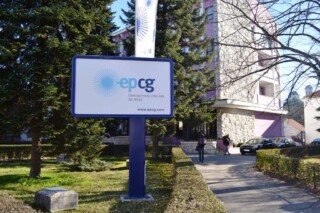Having in mind the events over the past two days, surge in the number of coronavirus cases, and especially important – an extremely high number of their contacts, it’s likely to expect that the number of new Covid-19 cases would increase. However, it’s expected that the measures taken in the most-affected municipalities would give results, but, of course, we need time for this to happen, Mr Senad Begić, deputy director of the Institute for Public Health, told Pobjeda daily.
-Key moments from the interview with Mr Begić-
What can you tell about the state of play in Montenegro regarding the coronavirus cases? What age groups are most affected by the virus and what are the most common clinical characteristics?
Begić: In Montenegro, since the start of the outbreak – from mid-March to June 27, the average age of patients was 41.5, and the largest number of patients (78 or 17.11 percent) was between the ages of 40 and 49, while 63.5 percent of all patients were younger than 50, and 77.43 percent were younger than 60. Since the beginning of June, the average age among patients has been 40, and it has been noticed that the disease is indeed more often detected among young people, so 80 percent of currently active cases are confirmed among people younger than 60. Even though it’s about relatively small numbers, it obviously comes as a result of the fact that people at highest risk of getting infected – those with underlying health conditions and the elderly – adhere to the prevention measures.
When it comes to the symptoms, i.e. the clinical characteristics – nothing strange has been detected in 145 currently active cases. Therefore, they all suffer from the inflammation of an upper respiratory tract, along with a whole range of usual symptoms that are mostly mild.
Is the Ministry of Health going to propose tighter restrictions having in mind the number of infections?
Begić: The Institute for Public Health carefully monitors the developments on the field and in accordance with the registered trends, and other indicators that primarily serve to monitor compliance with prevention measures, it will possibly propose new measures or the correction of the existing and implemented ones.
It wouldn’t be bad if we could repeat recommendations regarding the virus. Do you still recommend the increased maintenance of hygiene (cleaning the floors, undressing, etc. just as you did at the beginning of the epidemic)?
Begić: Absolutely. Nothing has changed when it comes to the virus, nor have the modes of transmission changed, particularly not the prevention measures.
Does swimming in the sea, pool or river represent high risk of catching the virus? Does the sea “kill” viruses and bacteria, or it rather helps them survive regardless of a physical distance on the beach?
Begić: It’s considered that swimming represents one of the safest sports and recreational activities “in the times of the coronavirus”, and there are several reasons for that. The main one is the high level of dilution, i.e. the virus in waters becomes diluted to such a level that it cannot pose a danger for the health of people. The same is with the pool water.
Can you forecast the number of infections in the coming period?
Begić: Having in mind the events over the past two days, surge in the number of coronavirus cases, and especially important – an extremely high number of their contacts, it’s likely to expect that the number of new Covid-19 cases would increase. However, it’s expected that the measures to curb the spread of the virus in the most-affected municipalities would give results, but, of course, we need time for this to happen.
Especially worrying is the number of contacts that the epidemiological services of the health centers and the Institute had spotted, as well as the territories where the virus has spread, as active cases have been recorded in 15 out of 24 Montenegrin municipalities. In addition, we are also worried over the fact that there are more newly-detected cases which cannot precisely point out to the source of the infection.




